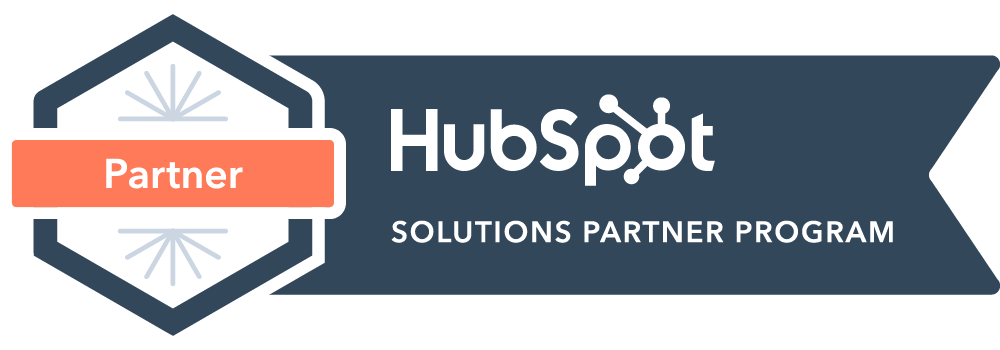The purpose of a blog is to establish yourself as an authority in your field. You’re demonstrating your area of expertise with each article you publish. It also helps you provide value to your audience because you’re giving them actionable knowledge—all for free.
Providing value builds trust with your audience, which is essential to nurture that audience and naturally move them towards becoming a customer.
Before you begin the process of writing a blog, keep some things in mind:
- People read blogs
backwards . They scroll all the way to the bottom of your post so they know how long it’s going to take them to read it, then scroll back up to the top while skimming and reading the post as they move up- all the while they are deciding if they actually want to read it. So keepskimability in mind when writing your post. - Mobile optimization should be your TOP priority. Search engines are looking first at mobile consumption to determine your rankings.
Blog posts have the potential to:
- Generate awareness of your brand
- Establish authority
- Build a relationship with your ideal customer avatar and create trust
The intent of you post depends on your topic and your audience. Before you dive into writing, figure out exactly what you are trying to do with this post and how it relates to the objective of your blog as a whole.
Define the goal of the blog post
Your goal will be defined by the traffic you’re trying to generate. Are you trying to….
- Generate organic traffic to your site?
- Use this post in a retargeting campaign?
- Will this post be used in a paid traffic campaign?
- Create a social media presence?
Each objective will have a different CTA which you will reference throughout your post and tie into your topic.
Determine if you want readers to consume the content directly on the site
This will depend on the type of post you are writing. You’ll usually want to have people read the post directly on your site so that you pixel them and engage with them on the site.
However, you may want to direct them to an outside site if you are working with a partner company or if you’re writing a sponsored post.
Determine blog post metrics
Define what metrics you will be looking at and keep that in mind as you write your post. One way that you can determine your metrics is knowing the traffic sources. What’s driving people to your site.
For us, at DM, we’re looking at how much organic traffic we are generating with each post and and how our email list engages with us (because that's how we get the most traffic).
If you are tracking organic or paid traffic, you’ll use Google Analytics.
Determine if you’ll include any advertising
Depends on your advertising model, certain sites generate revenue through advertising- like BuzzFeed and the Chive, for example, generate revenue based off of advertising alone.
[[Include your goal, method of consumption, metrics, and advertising needs here.]]
Are you writing the post yourself? Will you utilize a ghost-writer?
The author will determine your voice. Remain consistent in your voice and tone throughout the piece.
Think about the keyword phrases that you would use to find the subject naturally. Brainstorm keywords then type them in to Google and see how other people have approached those words and phrases.
- Do the keywords you find
match your intent? - Is the content populated in the search related to the intent of your post?
Look for opportunities to include these keywords throughout your post where it makes sense.
The Keyword Planner tool in Google AdWords will help with this.
This step will depend on the subject and the complexity of the subject. You may need to do outside research and pull other sources in or may be able to use only your in-house resources.
If needed, pull outside source materials and strengthen your piece by linking to your sources.
Gather your topic research and materials now.
If needed, pull outside source materials and strengthen your piece by linking to your sources.
Gather your topic research and materials now.
Your promise is what your reader will receive or have gained by the end of reading your post. Every blog post should fulfill a promise and provide value to your readers. You’ll know you’ve finished your blog post when you have fulfilled your promise.
Every blog post should fulfill a promise and provide value to your readers.
The hook is WHY is why someone should give you their time. The hook explains why someone should care about your post and gets them moving through the post to the end.
The outline will serve as a framework and guide for you to create your headings.
Breakdown the general sections
You’ll use sections to move people down your post and keep their attention (ideally you’ll have a new heading every 300 words).
Create headings for each section
Breakdown the general sections
You’ll use sections to move people down your post and keep their attention (ideally you’ll have a new heading every 300 words).
Create headings for each section
They are one of the first things that search engines are looking at to determine what your post is about to make them accurate and keyword focused.
Review Ryan Deiss on the Future of Marketing in a Bot-Infested, Facebook-Dominated World Where Everyone Just Buys All Their Stuff on Amazon and use it as a guide for this task.
Section 1: Introduction (Where We’re Going)
Three big shifts in marketing:
- Conversation is the new lead
- A community is
the new brand - The customer is the new power broker
Section 2: Marketing Shift #1: Conversation is the New Lead
Section 3: Marketing Shift #2: Community is the New Brand
Section 4: Marketing Shift #3: The Customer is the New Power Broker
Section 5: Conclusion (Restate Where You’ve Been)
Invest in the 3 C’s…
- Conversations
- Community
- Customers
Include your primary keywords (especially if your intent is to gain traffic to your post or site). A headline should be SPECIFIC. Use specific numbers and don’t round. Include specific benefits and define exactly what the reader will gain.
“How-to” headlines are extremely powerful and searchable.
The Call to Action (CTA) will give readers a logical next step and should be included at least two or three times throughout the post.
- Start moving people down the page as quickly as possible.
- Easily flow with short, fast sentences.
- Be quick (
generally you’ll want to keep an intro under one page, double-spaced).
Additional considerations for the introduction:
Try asking a question that you KNOW your target audience will say “yes” to.
- “Do you want to grow your business?”
You can also try presenting a problem, agitating the problem, empathize, and offer a solution.
Include story. You’ll need a story that ties directly into your post and is immediately engaging. Introductions with stories tend to be longer, so you’ll need a story that grabs the reader’s attention even quicker.
Check outan effective use of story:
Check out
Include an element of authority or empathy (or both)
- “I’ve been in the industry for X years so I know what I’m talking about”
- “I’ve been through this so I know what I’m talking about”
Include your hook or what the reader can expect to gain by the end of the post.
Weave the promise throughout
Restate your headline in a new way
The body is the reason they are still with you- it contains what they want to know.
The body should:
- Be easily consumed
- Include short paragraphs (sometimes even just one line)
- Use bulleted lists
- Use pull quotes from within your post that pique interest
- Bold, italicize, and hyperlink
- Break up the body by section and headings
- Find and include visuals
- Fulfill the promise
- Include keywords and phrases throughout
- Include at least two CTAs (include a CTA with an image for at least one instance)
At a minimum use the conclusion to wrap up your post.
Give your readernext steps based on your CTA.
Give your reader
These might be steps for implementation of the topic, execution on the subject, commenting, sharing the post, or opting-in for your lead magnet. Give them something to do with the information they’ve just gained.
During editing look for:
- Consistency
- Is your headline true? Did you give the readers what was promised?
- Grammatical or spelling errors
- Find opportunities for additional explanation
Your reader is like Homer Simpson-- He is not dumb, but he may things broken down and explained for him. Add explanation where you have made big assumptions about what your reader knows.
The SEO title and description are the pieces that are viewable in Google search. When writing the title and description, keep the relevant keywords focused towards the beginning.
1. Insert the SEO title in the SEO section/box
The title tag is not only an important SEOelement, but is also an important UX element.
1. Insert the SEO title in the SEO section/box
The title tag is not only an important SEO
The title tag is the most prominently displayed text on the Google search results page.

As a result, the title tag will be more effective if it reads properly to a user.
As a rule, the earlier the target keyword appears in the title tag, the more impact it will have on your SEO.
But don’t stress about it—just be sure to include the keyword in the title tag. If you can include it early in the tag, do it.

The SEO title should be even more keyword focused.
Blog post title: “Discover the 6 Marketing Lessons to Grow Your Digital Marketing Agency
SEO title: “Grow your Digital Marketing Agency With These 6 Marketing Lessons”
Blog post title:
SEO title:
Blog post title:
SEO title:
The SEO description should give a preview of what is included in the post. Insert your most relevant keywords in the description and repeat your focus keyword (the main keyword that your post covers). Include your hook and establish authority.
description, example
The permalink should be a shortened keyword focused link and should not be the exact title of your post.
“How to Optimize Your Onpage SEO” should be mywebsite.com/on-page-seo
description, example
Upload your blog post to your content management system and prepare to distribute it to your various channels. Rinse and repeat for a power packed and authoritative blog!
%20(1).png?width=300&height=112&name=Copy%20of%20The%20Social%20Lab%20(2)%20(1).png)


Comments